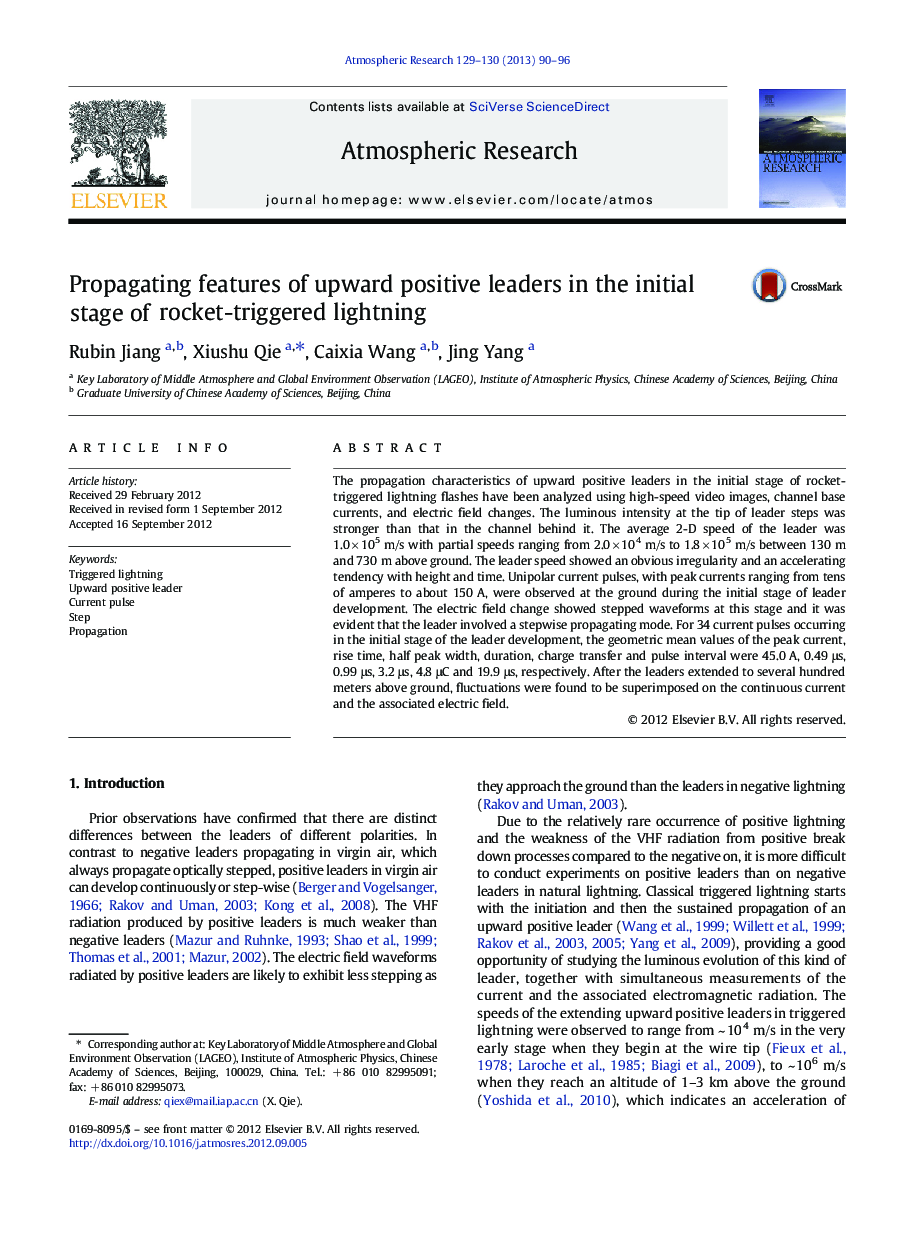| Article ID | Journal | Published Year | Pages | File Type |
|---|---|---|---|---|
| 4450011 | Atmospheric Research | 2013 | 7 Pages |
The propagation characteristics of upward positive leaders in the initial stage of rocket-triggered lightning flashes have been analyzed using high-speed video images, channel base currents, and electric field changes. The luminous intensity at the tip of leader steps was stronger than that in the channel behind it. The average 2-D speed of the leader was 1.0 × 105 m/s with partial speeds ranging from 2.0 × 104 m/s to 1.8 × 105 m/s between 130 m and 730 m above ground. The leader speed showed an obvious irregularity and an accelerating tendency with height and time. Unipolar current pulses, with peak currents ranging from tens of amperes to about 150 A, were observed at the ground during the initial stage of leader development. The electric field change showed stepped waveforms at this stage and it was evident that the leader involved a stepwise propagating mode. For 34 current pulses occurring in the initial stage of the leader development, the geometric mean values of the peak current, rise time, half peak width, duration, charge transfer and pulse interval were 45.0 A, 0.49 μs, 0.99 μs, 3.2 μs, 4.8 μC and 19.9 μs, respectively. After the leaders extended to several hundred meters above ground, fluctuations were found to be superimposed on the continuous current and the associated electric field.
► The propagating speed of UPL in triggered lightning was obtained. ► Unipolar current pulses occurred during the initial stage of leader development. ► The UPL involved a stepwise propagating mode during its initial development.
